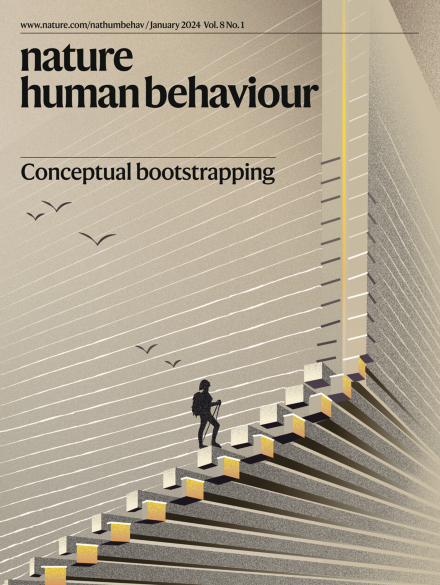End-to-end topographic networks as models of cortical map formation and human visual behaviour
IF 15.9
1区 心理学
Q1 MULTIDISCIPLINARY SCIENCES
引用次数: 0
Abstract
A prominent feature of the primate visual system is its topographic organization. For understanding its origins, its computational role and its behavioural implications, computational models are of central importance. Yet, vision is commonly modelled using convolutional neural networks, which are hard-wired to learn identical features across space and thus lack topography. Here we overcome this limitation by introducing all-topographic neural networks (All-TNNs). All-TNNs develop several features reminiscent of primate topography, including smooth orientation and category selectivity maps, and enhanced processing of regions with task-relevant information. In addition, All-TNNs operate on a low energy budget, suggesting a metabolic benefit of smooth topographic organization. To test our model against behaviour, we collected a dataset of human spatial biases in object recognition and found that All-TNNs significantly outperform control models. All-TNNs thereby offer a promising candidate for modelling primate visual topography and its role in downstream behaviour. Lu et al. introduce all-topographic neural networks as a parsimonious model of the human visual cortex.


端到端地形网络作为皮质地图形成和人类视觉行为的模型
灵长类视觉系统的一个显著特征是其地形组织。为了理解它的起源,它的计算作用和它的行为含义,计算模型是至关重要的。然而,视觉通常是用卷积神经网络建模的,卷积神经网络天生就能在空间中学习相同的特征,因此缺乏地形特征。在这里,我们通过引入全地形神经网络(All-TNNs)来克服这一限制。全tnn具有与灵长类动物地形相似的几个特征,包括平滑的方向和类别选择图,以及增强的具有任务相关信息的区域处理。此外,全tnn在低能量预算下运行,这表明平滑的地形组织具有代谢益处。为了测试我们的模型对行为的影响,我们收集了人类在物体识别中的空间偏差数据集,发现全tnn显著优于控制模型。因此,全tnn为模拟灵长类动物视觉地形及其在下游行为中的作用提供了一个有希望的候选者。
本文章由计算机程序翻译,如有差异,请以英文原文为准。
求助全文
约1分钟内获得全文
求助全文
来源期刊

Nature Human Behaviour
Psychology-Social Psychology
CiteScore
36.80
自引率
1.00%
发文量
227
期刊介绍:
Nature Human Behaviour is a journal that focuses on publishing research of outstanding significance into any aspect of human behavior.The research can cover various areas such as psychological, biological, and social bases of human behavior.It also includes the study of origins, development, and disorders related to human behavior.The primary aim of the journal is to increase the visibility of research in the field and enhance its societal reach and impact.
 求助内容:
求助内容: 应助结果提醒方式:
应助结果提醒方式:


